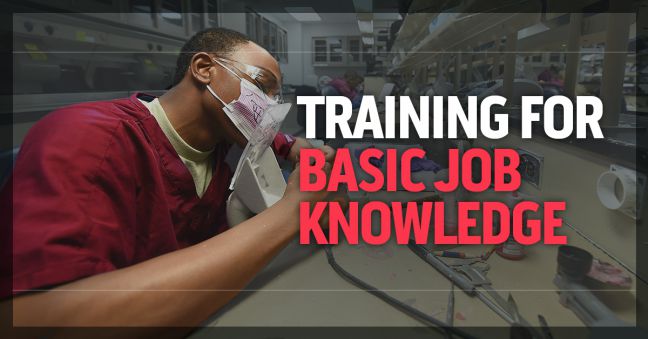
As a producer of learning management systems (LMSs) that are designed to let you to use a variety of different training delivery methods in a blended learning solution, we give a lot of thought to how employers can create the “best” blend.
Actually, we don’t think there’s any one simple answer to that question that you can apply every time. There are various ways to look at it, and each make sense in different circumstances.
However, one idea that we’re big fans of when creating a blended learning solution is to select the training delivery method (example–e-learning, written, video, field-based OJT, instructor-led classroom training, etc.) by considering the type of training material (the information) that you’re trying to convey, and/or the employee’s need for practice and feedback during training.
We’ve introduced that method of creating a blended learning solution in an earlier article. In this article, we’re going to take a deeper look at one aspect of the blend–training that’s designed to help employees acquire base-level, foundational knowledge that doesn’t require a lot of practice or feedback.
In other related articles, we’ve addressed training to help employees learn to basic job skills and procedures and training to help employees develop advanced job skills.
- Learning Management Systems
- Online Workforce Training Courses
- Incident Management Software
- Mobile Training Apps
Introduction: Basic Job Knowledge–When Employees Need It and What It Is
Before we charge ahead and start talking about the training delivery methods that are best for this kind of learning, let’s look more closely at the kind of “basic job knowledge” that we’re talking about.
When Do Employees Need to Learn Basic Job Knowledge?
There are lots of times when people have to learn basic information that they can then apply on the job. These times include:
- When a person is a brand-new hire at the company
- When an existing employee gets promoted to a new position
- If there’s some type of change at work–a new process put into place, a change of process, a new machine is acquired, or you begin to make a new product
What Do We Mean by Basic Job Knowledge?
People always have to know certain things on the job. In some cases, this is just procedural stuff–like your HR policies. In other cases, they need the information to actually perform their job tasks.
So this can include things like:
- Company’s attendance policy; drug/alcohol policy, etc.
- Information about the company’s products
- Information about the company’s production method
- Information about a specific job role
- Information about specific production lines, machines, and supplies
- Information related to specific job tasks
Basic Job Knowledge: Broken Down Into “Types” of Information
Learning & development experts often talk about this stuff that people need to know on the job as including facts, concepts, and processes.
Here’s what each of those are:
- Facts: A simple bit of knowledge. Example: This is a press.
- Concepts: A group of things that share certain characteristics. Example: All three of these machines are presses.
- Processes: How something “works”: Example: This is how the metal is pressed in this press.
(We’re keeping this discussion of “basic job knowledge” and facts, concepts, and processes short, but feel free to read this more extended article if you’re hungry for more information about facts, concepts, and processes.)
How Does This Basic Job Knowledge Fit In With Other Stuff Employees Have to Learn to Do Their Jobs?
This is the “foundational” knowledge that people need to know on the job.
This is the stuff you have to know before you can even begin to do other stuff on the job, such as perform simple procedures, apply basic skills, or demonstrate advanced job skills. In many cases, it’s a precondition for performing those tasks. For example, you can’t learn how to run a press if you don’t know what a press is.
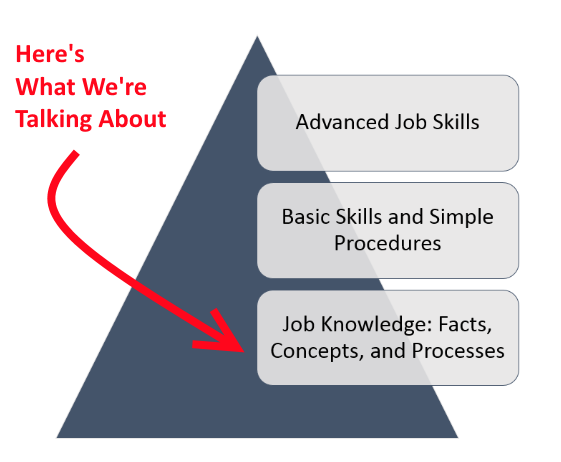
The Need for Feedback and Practice for When Learning Basic Job Knowledge
Sometimes, employees need a lot of feedback or practice during training, and sometimes they need almost none.
This often comes down to what kind of information they are learning during the training session.
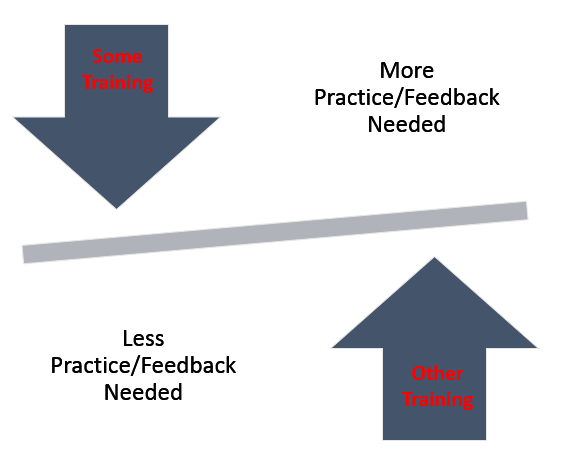
While there will be exceptions from time-to-time, in general, there’s no great need to let employees practice when they’re learning the kind of basic job knowledge we’re talking about in this article, and there’s no great need to provide feedback either (although Q&A/discussion sessions can be arranged).
As a result, you can rely on training delivery methods that don’t involve a lot of human interaction to teach workers this kind of information.
In some cases, these training delivery methods will be just as good as face-to-face training methods. In other cases, they’ll may be even more effective, partly because they allow for more self-guided learning and partly because they may include things like better images.
Training Delivery Methods for This Kind of Basic Job Information
Here are a few training delivery methods that are well-suited to help employees learn this kind of information.
e-Learning
e-Learning courses can be a great way to deliver this kind of information to employees. They can complete the course when it best fits their schedule, they can go through it in a self-guided manner that fits their learning pace, they can easily return to previous screens to review information they’ll fuzzy on, and there’s a built-in test of comprehension as well (we’ll return to this issue).
Here’s a sample e-learning course about Process Control Charts with this kind of basic job information. It’s from our libraries of off-the-shelf e-learning courses for workforce development.
Like that sample? You can check out more here.
Also, here’s a quick video overview that shows short samples from a variety of our courses.
Video
Video, even video filmed with a simple camera or your phone, can be an effective training tool. Of course, on its own, video doesn’t include a way to assess comprehension, but stay tuned for more about that.
As you know, there are lots of helpful videos on YouTube, plus OSHA, MSHA, the Chemical Safety Board, and others make good training videos as well.
Websites
There are many good websites where employees can learn valuable job-related information.
Do you know of some? If so, leave a URL in the comments section below.
Written materials (PowerPoints, books, Word documents, PDFs, etc.)
And of course, written materials in various formats can be helpful learning tools as well.
Putting Training for Basic Job Knowledge Online
One great thing about the e-learning courses, videos, websites, and written materials we just discussed is they can all be imported into an online learning solution and delivered to employees online.
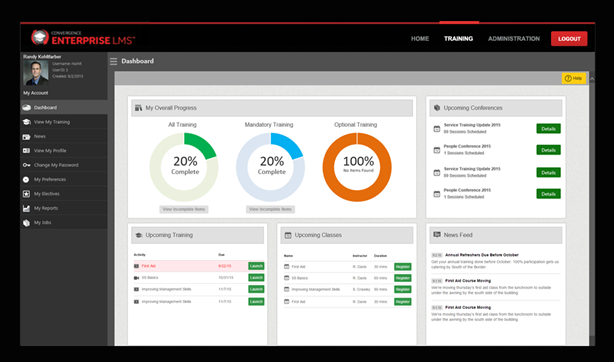
These systems are generally called learning management systems (LMSs) and they help you:
- Assign training to different workers and/or workers in different job roles
- Notify workers of training assignments
- Deliver some training online (including the kinds we’re talking about here)
- Automatically giving workers credit for completing training
- Delivering online assessments to determine if workers understood the training materials
- Storing completion records indefinitely and over time
- Changing training assignments when a worker changes his/her job
- Creating reports
- Automatically generating and emailing reports on a recurrent basis (day/week/month)
Using a Learning Management System (LMS)
Still curious about using an LMS to deliver this kind of training to workers?
Here’s a short video that gives you a better idea of what an LMS can do.
Assessing Basic Job Knowledge
One convenient aspect of using an online learning management system is that you can also have employees complete online tests and quizzes that the LMS automatically scores, using the score to determine if the worker passed or failed. This is a quick and effective way to determine if the worker understood and has truly learned from the online activity.
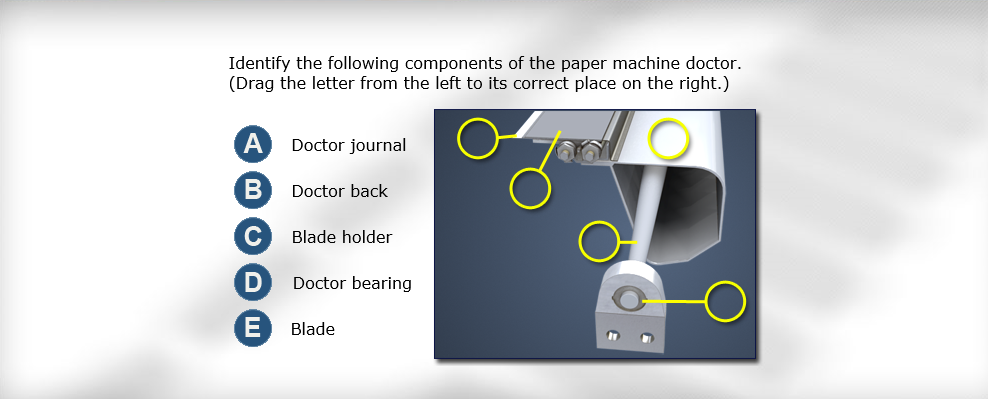
Don’t Forget Performance Support and Job Aids
We’ve talked a lot about helping workers understand, learn, remember, and later transfer information on the job.
But sometimes, there’s a better solution than training. Sometimes putting the information in the field (or on the job) where the employee can access it when necessary is a better solution.
Always consider performance support and job aids like this before you create and assign training.
In many cases, you can put them in the field with mobile apps and devices, as shown below.
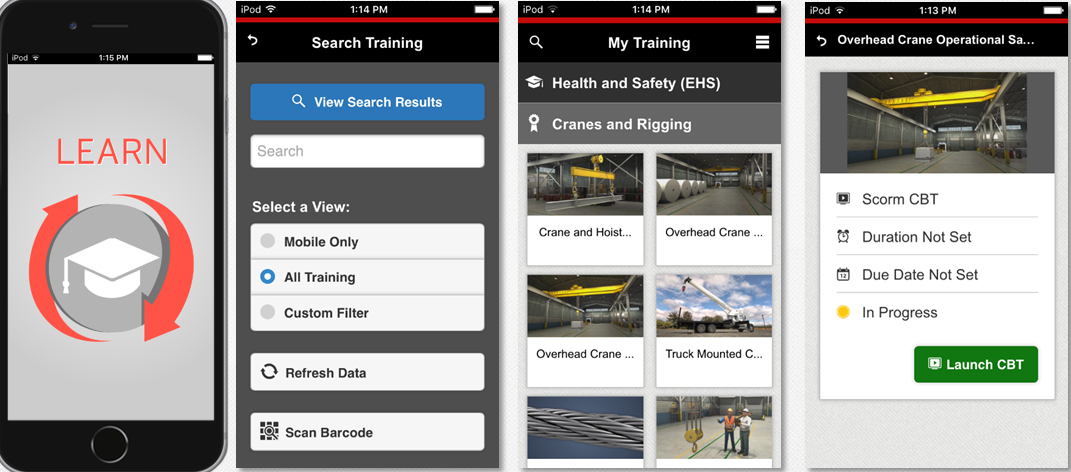
Conclusion: Helping Workers Learn Basic Job Knowledge
So there you have it. One way to create a blended learning solution for workforce development.
The benefit of this is it allows you to maximize your valuable, expensive, and probably limited face-to-face training for those more advanced job skills further “up the pyramid” we showed you earlier, where they’re more needed and where you will get more bang for the buck.
What are your own thoughts? How do you blend your training?
Hey, since you made it all the way to the end, don’t forget to download our Manufacturing Training Guide below, too…
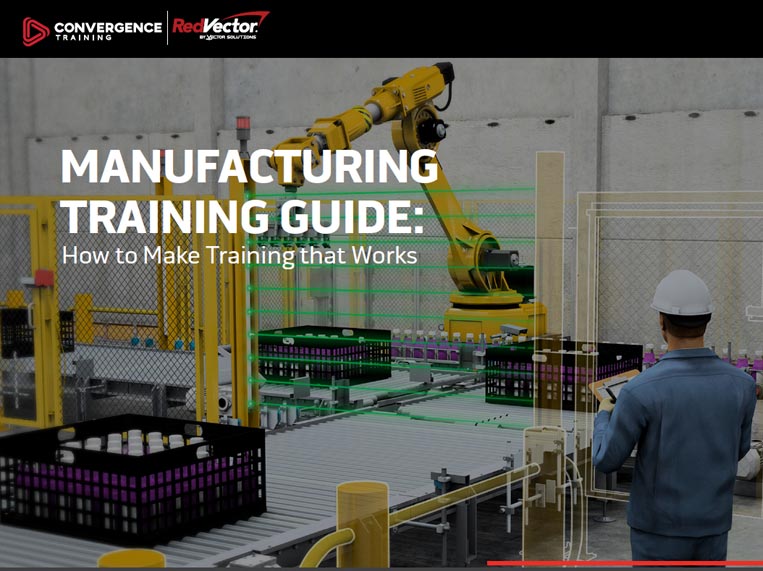
Manufacturing Training from Scratch: A Guide
Create a more effective manufacturing training program by following these best practices with our free step-by-step guide.
Hi, cogent and nice article, thank u .
Glad you found some stuff of value, Raghuraman.